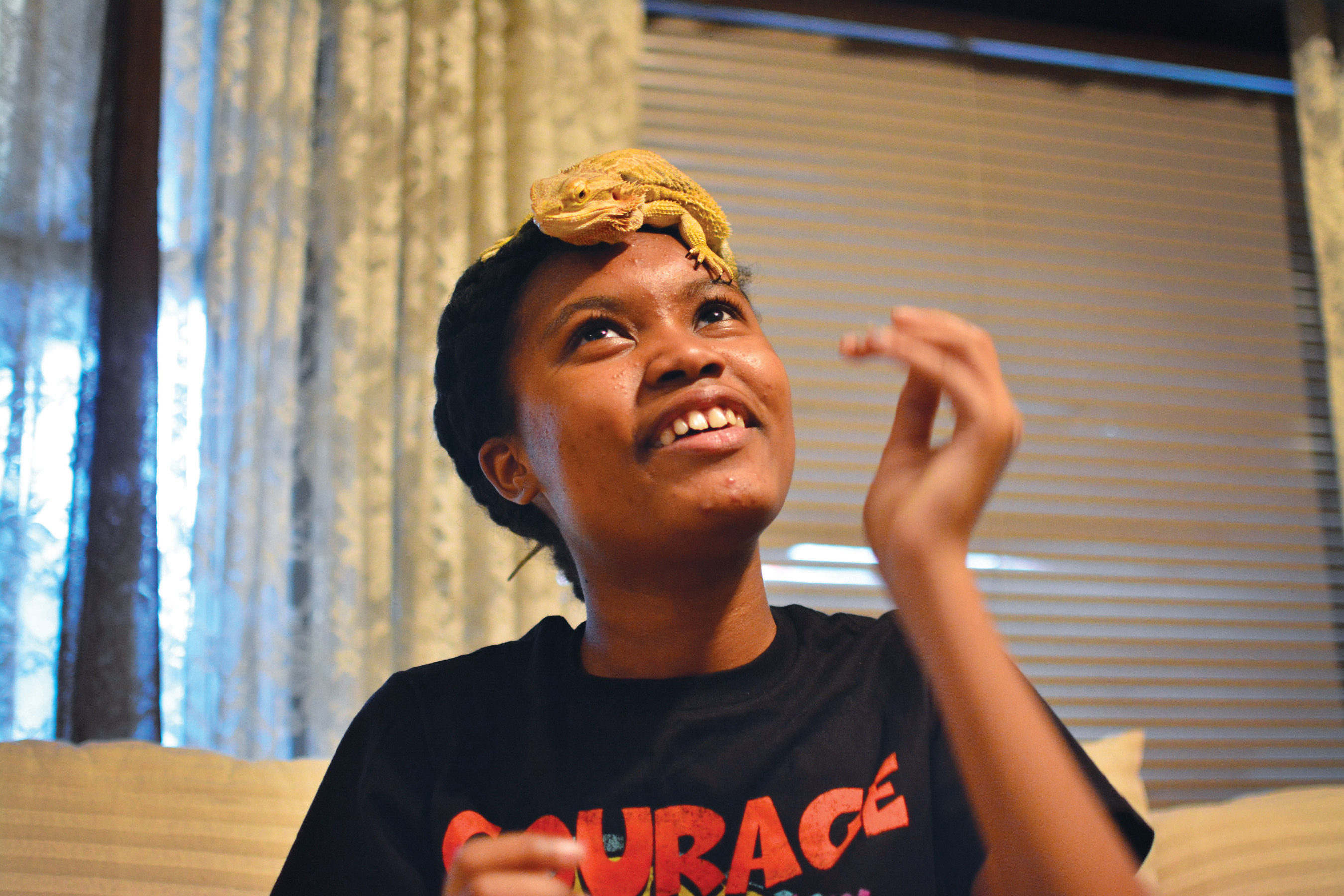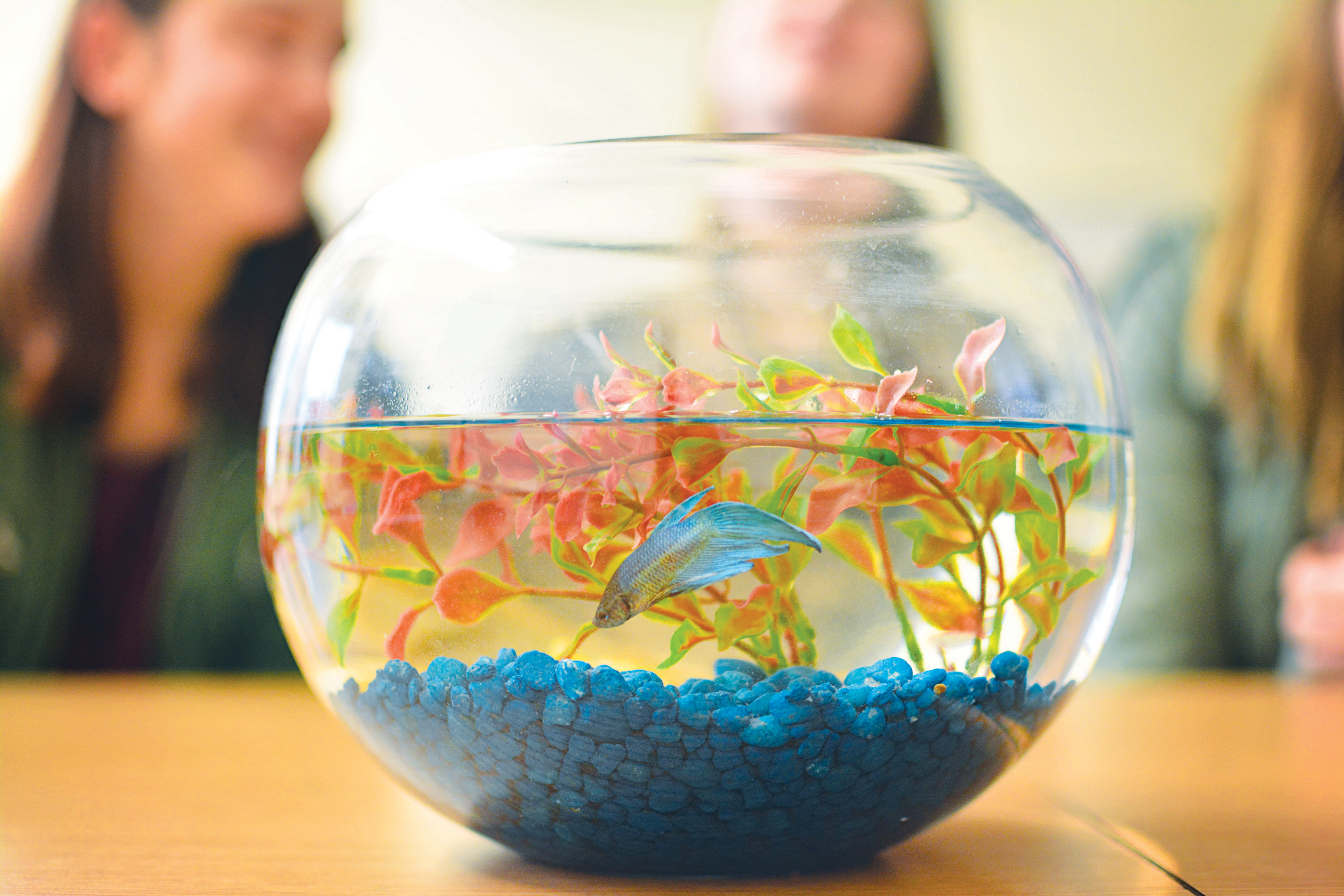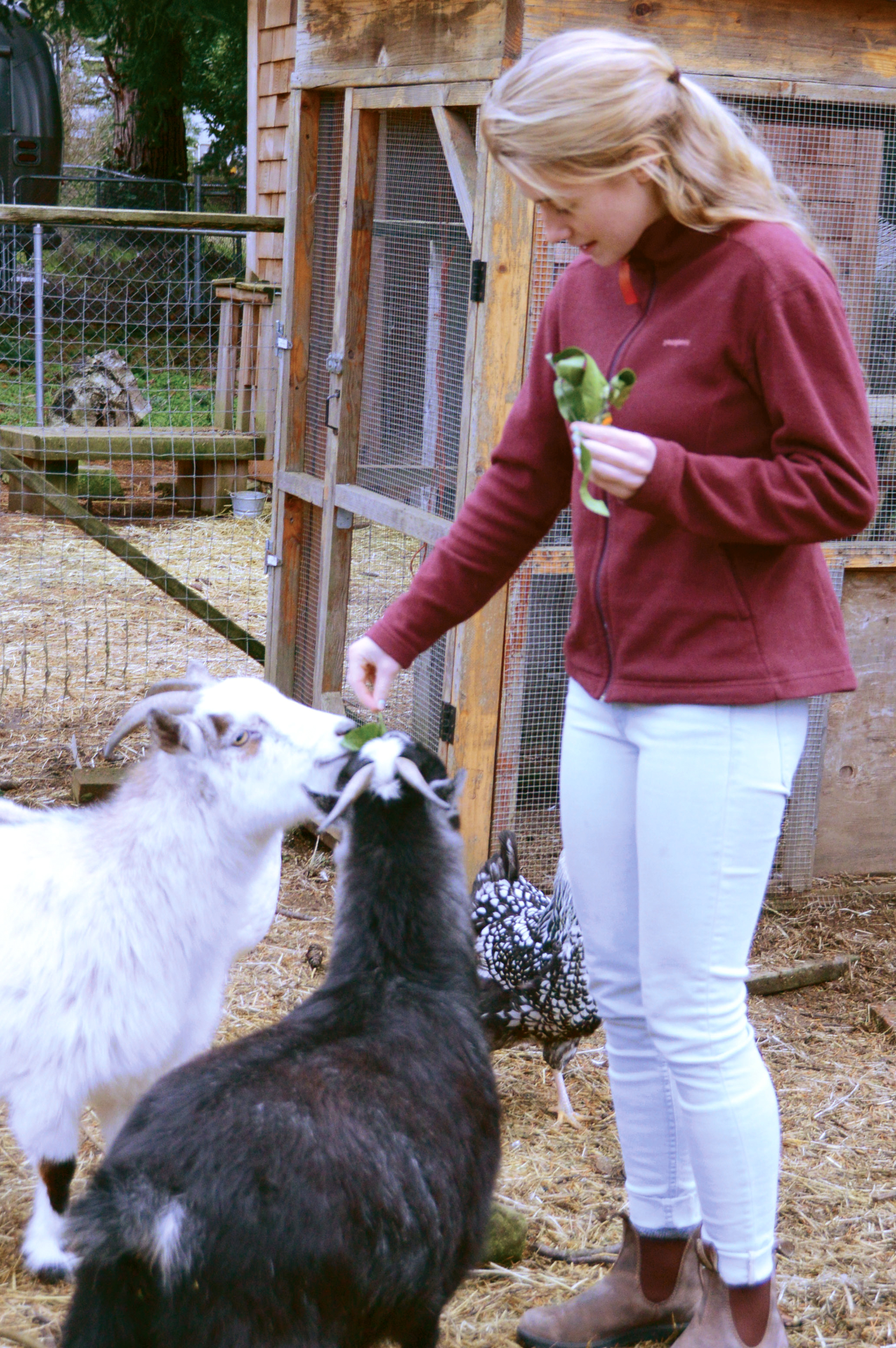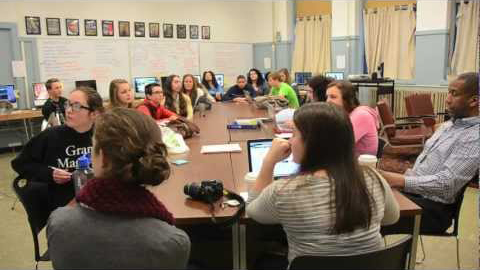When Jada Waters’ hand slowly reaches into the cage, she inches it down cautiously. She’s trying not to intimidate or frighten the bearded dragon she owns. Her fingers hang as the dragon’s snout moves closer, taking in Waters’ scent. All is calm until it lunges, mouth open wide.
“I did that for like maybe a month and then finally she got used to me,” says Waters.
She has had Waddles since last year. “Her name is Waddles ‘cause she’s really fat, so every time she walks she just waddles around.”
Waddles is her favorite pet, she says, and cost her about $250 including all the equipment. “She was a rescue so she was like a little timid, so every time I would come up to her she would hiss,” recalls Waters. “I was a little scared and I was like ‘Oh my gosh, I just got you and you don’t like me.’”
Waters also has two frogs, a dog, a rabbit and a tortoise. She’s always been intrigued by animals. When she attended a job fair in kindergarten, she declared she wanted to become a veterinarian. “I would always like pretend to operate on little stuffed animals,” she recalls.
Now Waters and Waddles share a special connection. “Every time she sees me, she wants to get out of the cage.”
— Cassius Pettit, photos by Eliza Kamerilng-Brown
Kyleen Carter clearly remembers the first time she rode bareback and without a bridle on her horse, Utah. It was the beginning of her sophomore year.
For years, she had dreamt of riding like this – one of the most dangerous ways to mount a horse. When she got her first horse at age 13, she started working toward her goal. “It was more about gaining his trust and I needed to be able to trust him,” she recalls, “because there was no way I could officially control him. It was all trust.”
Carter remembers her math and English classes had been especially hard. She also didn’t have a strong group of friends and felt out of place socially in school.
“When I showed up at the barn I was just like, OK, I want to ride my horse and pretend today never happened,” she says.
She gently took off Utah’s bridle and saddle, and they started at a slow trot, soon moving into a canter.
“My first thought was: ‘Please don’t kill me…please don’t kill me,” Carter recalls. “And I actually remember tightening the chin strap on my helmet because I was a little nervous about him, you know, freaking out or doing something he wasn’t supposed to.”
But, she says, he was a pro.
For years, Carter and Utah have been inseparable. “There has been times when my horse has been my only friend,” she says. “I spent a lot of time eating lunch alone and being last picked at group stuff. My horse was just kind of my outlet to make things better.”
Right now, Utah is recovering from an injury that he got last summer and Carter is just starting to ride him again. Her next goal, she says, is to jump with her horse, bareback and without a bridle.
— Lael Tate, photo by Molly Metz
About a month ago, Naomi Stringer walked into her eighth-period leadership class to a big surprise – the once clear fishbowl, containing the class pet fish Ulysses, had turned a dark green and Ulysses wasn’t in sight. After further investigation, the class realized that someone had poured the entire container of fish food into the bowl.
In a rush, a few students emptied the water out and put the motionless fish in a cup with water. The dirtied bowl smelled so bad that as they started to clean it in the bathroom, students started to gag. They took it outside. “It took a whole period to clean. It was so terrible. It was so bad,” says Stringer.
Jessica Murray, the leadership adviser, says she’s glad they still have a fish because it’s an opportunity to teach the class about responsibility and dedication. “It adds a fun element to the class,” she says. “This isn’t just all seriousness and stuff like, ‘We have pets, we have fun.’ It just adds a new dynamic to it, which is really nice.”
As an extra incentive, Murray joked in the past that the class grade depended on whether the fish lived. But she never thought her joke might become a reality. Now the class has learned its lesson, and they’re making an effort to keep the bowl clean. “Ms. Murray laughs about it, everyone laughs about it,” says Stringer. “Every time we come to class it’s like, ‘Is the fish moving?’ ‘cause it will just be laying there. It’s kind of like a little class joke. ”
— Blu Midyett, photo by Eliza Kamerling-Brown
The quarter-acre backyard at Stella Wallace’s house in the Cully neighborhood of Northeast Portland resembles a farm. There’s a vegetable garden where Wallace and her parents grow onions, kale and cabbage. Then there are the two chickens. And she has two goats, who Wallace refers to simply as black goat and white goat, who roam around in a pen.
Wallace says she’s not much of an animal person. It was her mother who wanted the goats because she remembers having her own that produced milk and cheese. The pair she has now doesn’t serve the same purpose.
“They stand on top of their platforms and scream,” says Wallace.
One day in the middle of summer stands out for her. She was lounging in her backyard, when suddenly her smaller goat, the black one, leaped off a three-foot tall staircase that leads into the house and dive bombed the smaller goat.
Wallace, who had never seen one of her “mellow” goats attack the other, was shocked. “You see fat little goats who just sit around; then you see a little one leaping off a three-foot ledge in the backyard; you don’t expect it,” she says.
The goats then got into one of their normal tussles, intertwining their horns and head butting each other. “I thought it was kinda funny,” says Wallace of that instance. “They’re very aggressive.”
— Sophie Hauth, photo by Joshua Webb
Brenden Jorgensen-Behurst sleeps with three of his seven dogs almost every night, a habit that sometimes keeps him up past midnight. The three dogs are all Chihuahua breeds and are relatively small but Jorgensen-Behurst says it wasn’t always like that.
After his dog, Chester, a yellow labrador retriever, grew too big to share a bed, the teen had to kick him out of his room at night. But the young dog couldn’t stand to sleep without the company of another person.
“I closed my door and he would push my door open,” he recalls. “After so many times, he ripped the top hinge off the door,” he recalls. The broken hinge was such a hazard that they had to remove it completely. Jorgenson-Behurst was forced to push a desk against his door to keep the dog out at night.
Once, he was with his favorite dog, Copper, a Chihuahua-basset hound mix, and things went awry.
“I was sitting next to him and he started growling and so I started to give him his bone and I leaned in too far,” he says. “He snapped and bit my face, and then I went to urgent care.”
He has to work to keep track of them all, but for the most part he doesn’t mind. In fact, he and his family are quite smitten by the canines.
“Anyone in our household right now would give their lives to save the animals,” he says. “If… one of the animals were stuck in the house during a fire, I would run in there to get my animal.”
— Blu Midyett, Photo by Cassius Pettit









